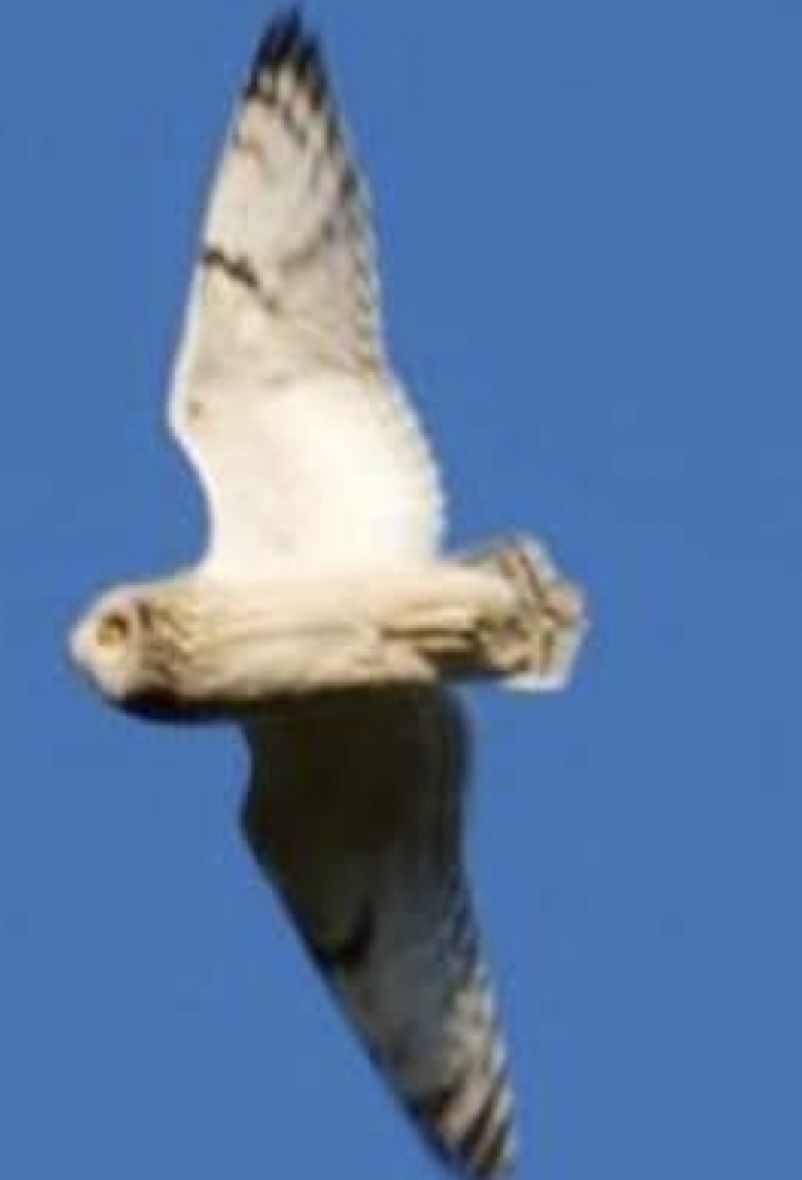THIS photo taken by a local lad this week could lead to radical changes on the Belfast Hills. Because the photographer caught one of Ireland’s rarest birds – and just a short distance from Belfast.
The short-eared owl – ulcabhán réisc or owl of the marsh in Irish – was hunting along the Tornaroy River yards from the Upper Springfield Road.
It’s a completely new bird to Dúlra – he’s seen long-eared owls and barn owls, but was of the opinion that short-eared owls didn’t even exist here. But they do – and just up the road!
This is truly an incredible bird. While barn owls hunt at night and long-eared owls at dusk, their short-eared cousin likes to break owl convention by feeding during the day. This photo was taken at 2.30pm.
The West Belfast environmentalist who first identified it, Aaron Kelly, points out that it has yellow eyes. “That’s the pigment needed for day hunting, while the long-eared’s eyes are deep orange for dusk and the barn owl’s are dark.
“It’s an easy way to tell them all apart.”
When Dúlra heard the news of the new bird, it immediately rang true. Because the thin sliver of land where the ancient Tornaroy River – a stream with the grandest of names, Tor na Rígh, the High Place of the Kings – runs is the very place where Dúlra saw another rare raptor a decade ago.
He was driving to a country garage when the eagle-like bird rose from the grass at the side of the road and flashed its white rump. It was a female hen harrier, the one and only time he has ever seen one.
It too was hunting along Tornaroy River – which is obviously a rich vein for wildlife, probably because it’s rarely if ever visited by people.

Last year Aaron discovered pine martens on the Belfast Hills – and this winter, as a direct result of that, 50 acres of woodland will be planted on the slopes to provide more habitat for our rarest mammal.
And now that he has discovered that Ireland’s rarest owl is feeding just a mile from the city, hopes are high that the grassland it feeds on will be protected in the hope it will return. Aaron said: “I had reports of an owl behind St Mary’s school and thought it must be a barn owl.
“But I know now that this is the bird that they saw, the short-eared owl.
“They’re bigger than a barn owl, and have brown feathers on the outside but underneath they are white. I saw it coming across the field and thought it was a buzzard, but then I said to my friend Marty Keenan, who was taking the pictures, ‘Get it, it’s an owl!’
“When it came close you could see its flat head and cone-shaped body.
“This is our only owl that hunts in the day. And incredibly it nests on the ground – so it really needs no disturbance from people or dogs or cattle to feel safe enough to build a nest.
“We don’t know if it’s a passing visitor or if it lives here. It’s probably a visitor which is using the Black Mountain too.”
The owl hovers above the heather and rushes, hunting for mice or pipits.
“This is a priority species which there was no evidence of until now,” addded Aaron. “But now that we’re found it, then we can start campaigning to protect them and attract more of them in. We can focus on the land management for the owls.”
Aaron and Marty also photographed a female hen harrier at the same spot – it could even be the same one Dúlra saw a decade ago!
Aaron said: “I’d love to get a line of trees on that wee Tornaroy River, the way it used to be – it’s incredible how many birds of prey are around this area. People look at our mountains unaware of the wildlife – but they are very rich.
“It’s now a matter of having a strategy to develop them properly, not just for us, but for wildlife. It’s probably a stretch to imagine short-eared owls and hen harriers nesting there, but why not?”
It was only 150 years ago that golden eagles nested on the Belfast Hills and soared over Belfast. Maybe, with people like Aaron spearheading the fightback for nature, they could some day return.
• Seen anything that you think might interest Dúlra? Give him a ring or send him a text on 07801 414804.







